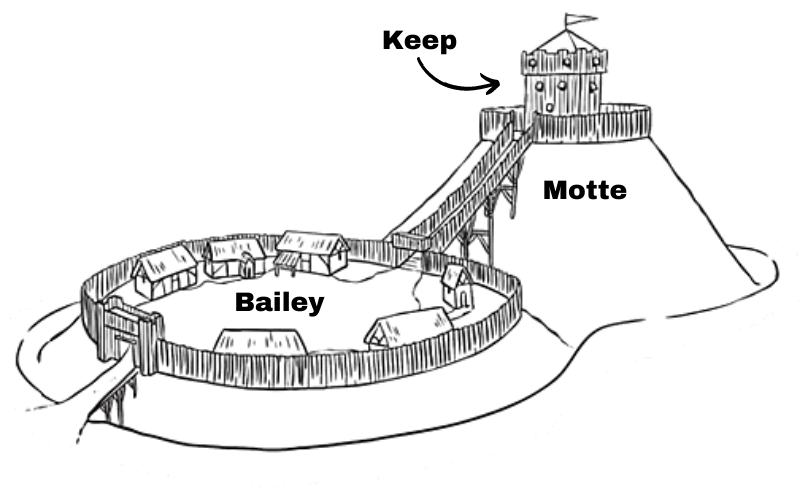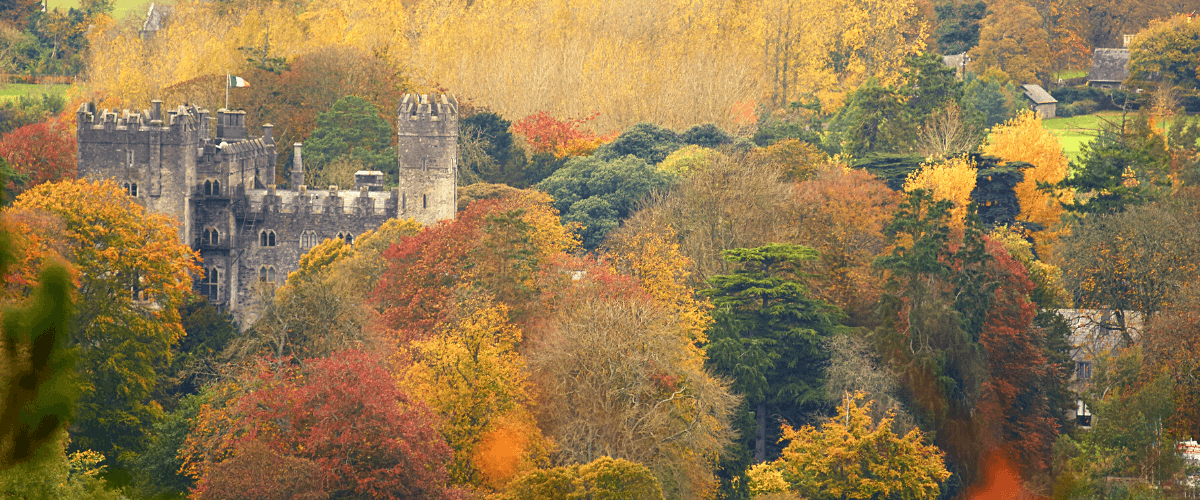Ireland is a land full of mysteries and legends, and one of the most prominent features that highlight its rich history and culture is the castles built throughout the centuries. Irish castles are important not only from a historical point of view but also for their unique architectural styles. In this article, we will delve into the different types of Irish castles and their evolving architectural designs. Understanding the development of Irish castle architectural styles is essential for appreciating the beauty and significance of these stunning structures.
For those seeking out Irish castles for sale, rent, weddings, or stays, knowledge of the different architectural styles can enhance their experience. Moreover, delving into Irish castles’ history, abandoned or still standing, also triggers a fascination with the tales of Irish castles, adding to their charm.
Let’s explore the evolution of Irish castle architecture, from the early medieval to the Gothic revival period, and how this reflects historical and cultural changes that occurred in different eras.
Early Medieval Castles
During the early medieval period, two primary forms of castles existed in Ireland: Motte and Bailey Castles and Ringforts. These two types represented the first wave of Irish castles and were primarily built as fortifications to protect families and their valuables from invading armies.
Motte and Bailey Castles

Motte and Bailey Castles were introduced to Ireland by the Normans during the 12th century. They were constructed as wooden structures, and they consisted of a motte and a bailey. The motte was a mound of earth that had a wooden keep built on top. The bailey, on the other hand, was an enclosed courtyard that was surrounded by a palisade.
Some examples of Motte and Bailey Castles in Ireland include Granard Motte in County Longford, which is believed to be the highest in Ireland, and Mount Sandel in County Londonderry, the oldest known example of a Motte and Bailey Castle in Ireland.
Ringforts

Ringforts, on the other hand, originated during the Celtic period and consisted of earth and stone constructions. They were typically circular or oval in shape, with a defensive bank and ditch. The center was often occupied by a small rectangular or circular stone structure.
The most famous Ringfort in Ireland is Grianán of Aileach, which is a stone fortification located in County Donegal. Dating back to the 6th century, it’s one of the most impressive examples of the ancient Celtic fortifications remaining in Ireland. Another notable Ringfort is Staigue Fort in County Kerry, which has the largest stone fort in Ireland, measuring 27 meters in diameter.
Understanding the architecture and features of early medieval Irish castles is crucial to appreciate the evolution of the styles that followed, such as the Anglo-Norman and Gothic Revival periods.
Anglo-Norman Castles
The Anglo-Norman period brought a significant change in the construction of castles in Ireland. Native Irish kings initially built Motte and Bailey Castles for their own defenses, but they were soon replaced by stone structures introduced by the Anglo-Normans.
Keep/Gatehouse Castles
The most notable example of an Anglo-Norman castle is the Keep/Gatehouse Castle, which is characterized by a central keep or gatehouse, surrounded by strong defensive walls and an inner and outer ward. This type of castle provided better protection against artillery and other weapons.
Two of the most famous examples of Keep/Gatehouse Castles in Ireland are Trim Castle in County Meath, the largest Anglo-Norman castle in Ireland, and Carrickfergus Castle in County Antrim, one of the most well-preserved examples of an Anglo-Norman castle in Ireland.

Tower Houses
The late medieval period saw the emergence of a new type of castle – the Tower House. These compact, fortified residences were built mainly by the Irish aristocracy and were used for both residential and defensive purposes. They were typically rectangular or square in shape, with multiple stories and a parapet or battlements.
Bunratty Castle in County Clare is an excellent example of a Tower House. It’s now a popular tourist attraction and showcases the architecture and lifestyle of the wealthy families of that era. Another famous Tower House in Ireland is Blarney Castle in County Cork, which is famous for its Blarney Stone – a stone that, according to legend, gives the power of eloquence to those who kiss it.

Understanding the evolution of Irish castles from the early medieval to the Anglo-Norman period is crucial to understanding Irish history, architecture, and culture. These majestic structures continue to intrigue and fascinate people to this day, making them popular destinations for weddings, stays, and tours.
Gothic Revival Castles
During the 18th and 19th centuries, there was a revival of interest in the medieval past, and the Gothic style became popular again in architecture. This revival influenced the design of some of Ireland’s most striking castles, characterized by ornate details and asymmetrical towers.
Early Gothic Revival
The early Gothic Revival period in Irish castle architecture began in the mid-18th century with the rise of Romanticism and antiquarianism. This style is defined by its use of Gothic architectural elements such as pointed arches, ribbed vaults, and spires. Irish castles built in this era were often designed with asymmetrical features and ornamental details.
Charleville Castle in County Offaly is a notable example of early Gothic Revival architecture. Built in the 18th century, the castle features a unique circular tower and pointed arches influenced by Gothic design.
Victorian Gothic Revival
In the 19th century, the Industrial Revolution and nationalist movements contributed to a later wave of Gothic Revival design in Ireland. During this time, modern construction techniques allowed architects to create even more elaborate and decorative styles. Many castles and mansions built in this era feature Neo-Gothic motifs such as lancet windows, turrets, and gargoyles.
One particularly stunning example is Kylemore Abbey in County Galway. Built in the late 19th century, the castle’s design incorporates Gothic features such as spires, high-pitched roofs, and decorative stone carvings.

The Belfast Castle in County Antrim is another impressive example of Victorian Gothic Revival architecture. This castle was built in the 19th century and renovated in the 20th century, with a design that incorporates many classical Gothic motifs.
In Summary
Irish castles have a rich and fascinating history that reflects the country’s cultural and political changes over time. From the early medieval period through the Gothic Revival era, these castles have evolved to reflect the architectural styles and building techniques of each era, becoming a symbol of Ireland’s past and present.
Whether you’re interested in staying in some of the best Irish castles to stay in, or simply exploring the tales of Irish castles through books and documentaries, there is no denying the enduring fascination and importance of these structures.
From the oldest castle in Ireland to the abandoned castles in Ireland, these sites have a special place in the hearts and imaginations of both Irish people and visitors from around the world. Whether you’re looking for a castle to buy, an Irish castle for rent, or simply want to explore the history and culture of these incredible buildings, there are countless opportunities to do so.
So, make sure to visit the most famous Irish castles, such as Dublin Castle or Cahir Castle, and explore the many options for Irish castle accommodation, including Irish castle Airbnb or Irish castle hotels. As you delve into the rich history and fascinating stories of these structures, you’ll gain a deeper appreciation for the enduring legacy of Irish castles.
If you are looking to experience the beauty and history of Irish castles, there are many options available, including Irish castles for weddings, Irish castle bed and breakfast accommodations, and even abandoned Irish castles for sale. With a wide range of castles and architectural styles to choose from, there’s something for everyone to explore and enjoy. Don’t miss out on the opportunity to immerse yourself in the history and culture of these incredible structures!

